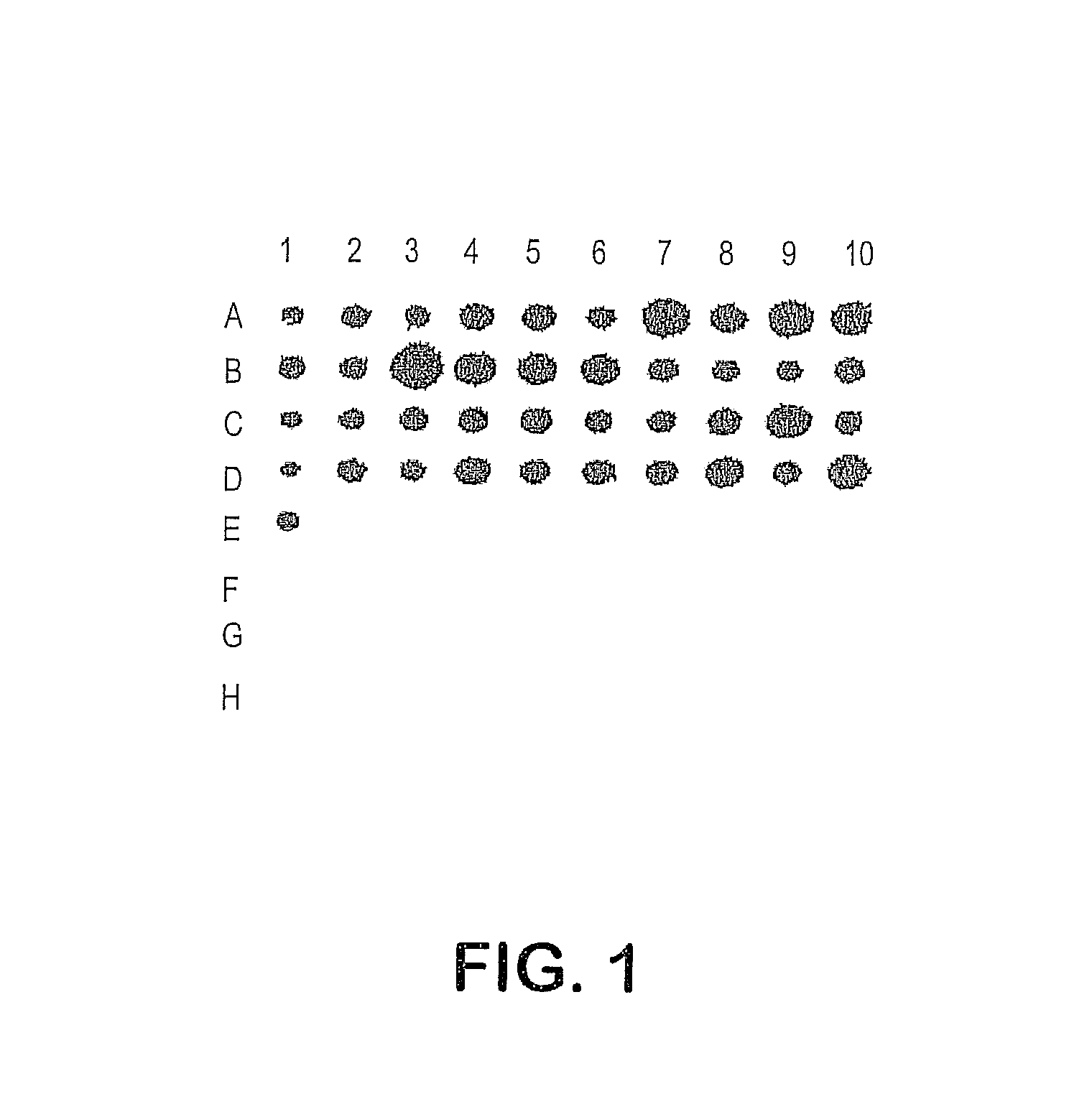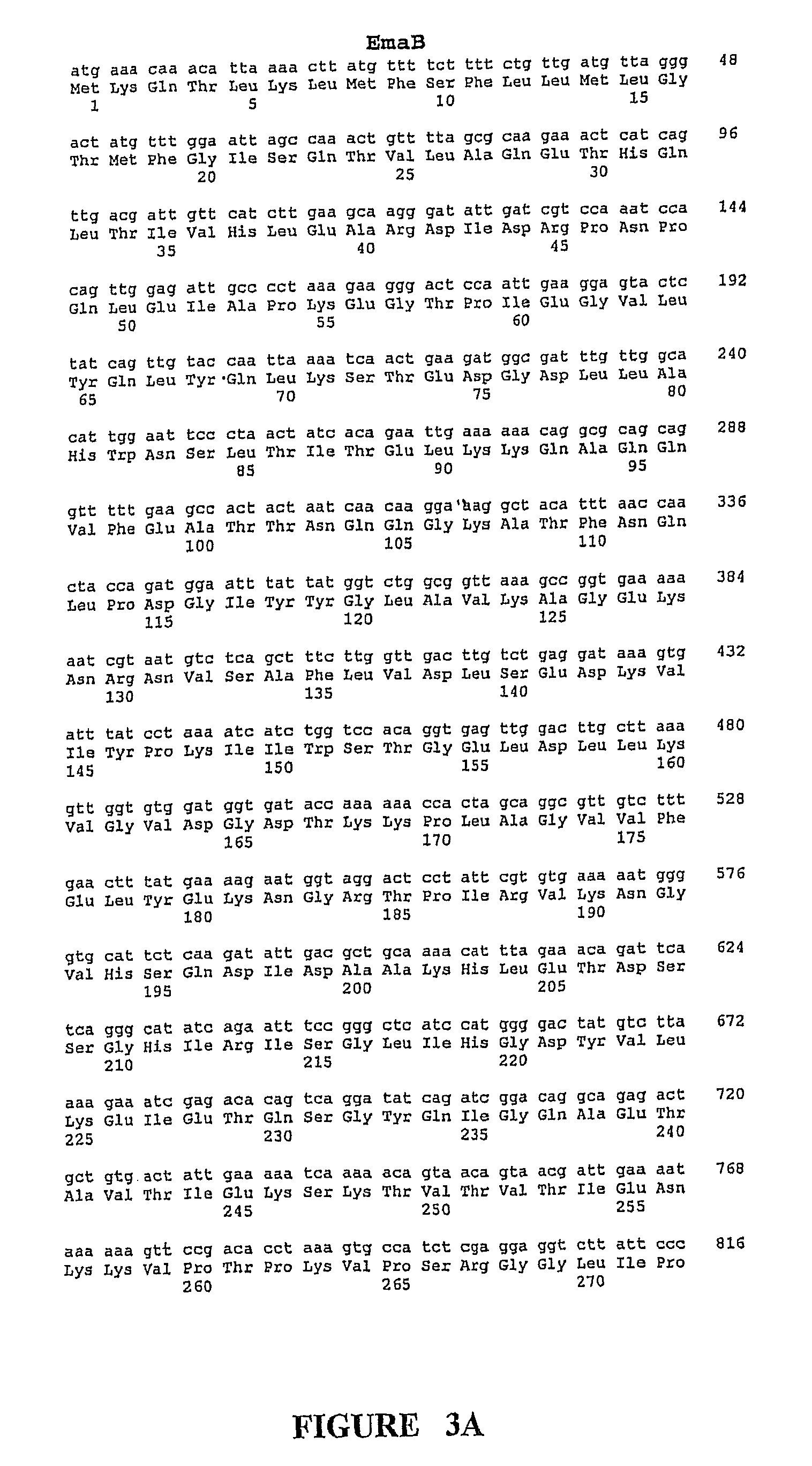Group B Streptococcus polypeptides nucleic acids and therapeutic compositions and vaccines thereof
a technology of streptococcus and polypeptides, applied in the field of extracellular matrix adhesion, can solve the problems of ineffective antibiotic prophylaxis programs, poor compliance, failure, etc., and achieve the effect of not no effective prophylaxis strategy for adult infections has been established, and preventing all gbs diseas
- Summary
- Abstract
- Description
- Claims
- Application Information
AI Technical Summary
Benefits of technology
Problems solved by technology
Method used
Image
Examples
example 1
Identification of Group B Streptococcus Genes
[0340]Comparing the genetic and phenotypic composition of genetically-related groups of a bacterial species facilitates identifying virulence factors present in the most pathogenic groups. Type III GBS can be subdivided into three groups of related strains based on the analysis of restriction digest patterns (RDPs) produced by digestion of chromosomal DNA with Hind III and Sse 8387 (5, 6). Over 90% of invasive type III GBS disease in neonates in Japan and in Salt Lake City is caused by bacteria from one of three RDP types, termed RDP type III-3, while RDP type III-2 are significantly more likely to be isolated from vagina than from blood or CSF (6). These results suggest that this genetically-related cluster of type III-3 GBS are more virulent than III-2 strains and could be responsible for the majority of invasive type III disease globally. We proposed that bacterial factors that contribute to the increased virulence of III-3 strains can...
example 2
Biologic Characterization of Novel GBS Genes
Isogenic Mutant Bacterial Strains
[0356]To identify biologic activity of these novel GBS genes, isogenic mutant bacterial strains are created which are identical in all respects except for the presence or absence of a particular gene. Deletion mutants are created by allelic replacement. The relevant gene, with 100-300 bp of flanking sequences, is subcloned and modified by the deletion of an intragenic portion of the coding sequence and, in some cases, the insertion of a kanamycin resistance gene. The mutant gene is cloned into the suicide vector pHY304 (kindly provided by Dr. Craig Rubens), a broad host range plasmid containing a temperature sensitive ori, erythromycin resistance gene (erm.sup.TS), and a pBS multiple cloning site. The pHY304 vector is a derivative of the vector pWV01 (Framson, P. E. et al (1997) Applied Environ Microbiology 63:3539-3547). Plasmids containing mutant genes are electroporated into strain 874391 and single cros...
example 3
EMA Homologs in Streptococci and Other Bacteria
[0367]As noted above, the GBS Ema proteins share segmental homology with certain characterized proteins from other bacterial species, including bacterial adhesion and invasion proteins. The segmental homolog is noted as in the range of 24-39%. In addition, the Ema proteins demonstrate some homology to one another. A comparison of the ema genes shows that EmaA and EmaB are 47% homologous, however, due to the difference in their predicted lengths it is necessary to insert gaps in the EmaA sequence in order to line them up. The two Ema proteins which are most similar in structure, EmaC and EmaD share 48.7% amino acid homology to one another. EmaA / B, EmaC / D and EmaE are each .ltoreq.20% homologous to one another.
[0368]The ema sequences were used to search the unannotated microbial genomes (Eubacteria). The predicted Ema proteins were searched against translations in all six frames (tblast x) of finished and unfinished unannotated microbial ...
PUM
| Property | Measurement | Unit |
|---|---|---|
| molecular weight | aaaaa | aaaaa |
| molecular weight | aaaaa | aaaaa |
| temperature | aaaaa | aaaaa |
Abstract
Description
Claims
Application Information
 Login to View More
Login to View More - R&D
- Intellectual Property
- Life Sciences
- Materials
- Tech Scout
- Unparalleled Data Quality
- Higher Quality Content
- 60% Fewer Hallucinations
Browse by: Latest US Patents, China's latest patents, Technical Efficacy Thesaurus, Application Domain, Technology Topic, Popular Technical Reports.
© 2025 PatSnap. All rights reserved.Legal|Privacy policy|Modern Slavery Act Transparency Statement|Sitemap|About US| Contact US: help@patsnap.com



